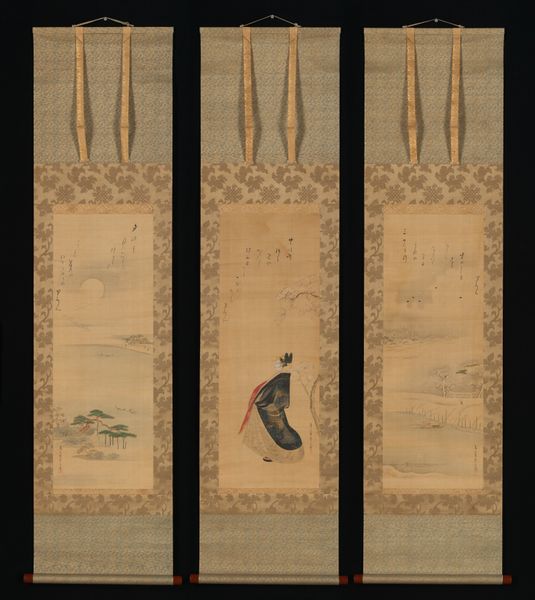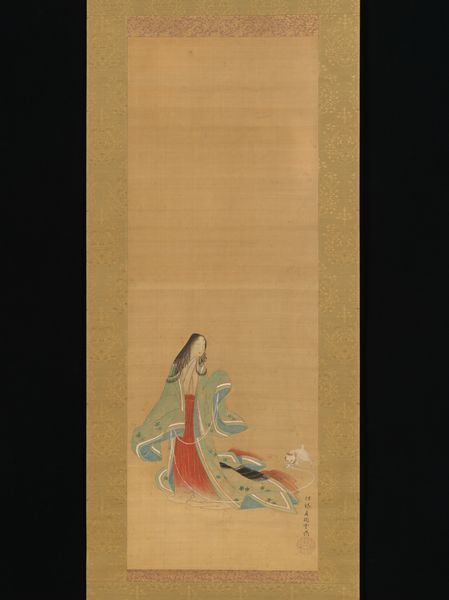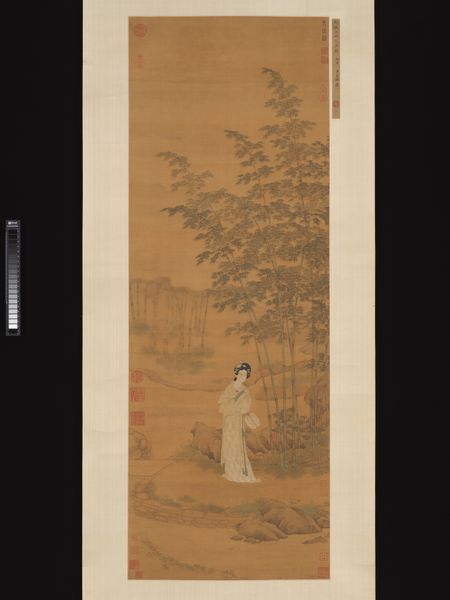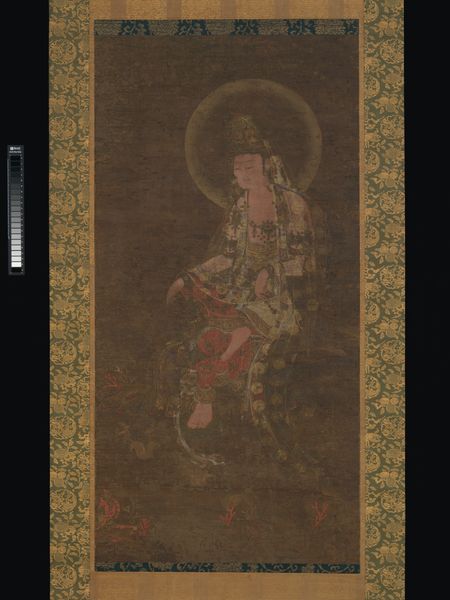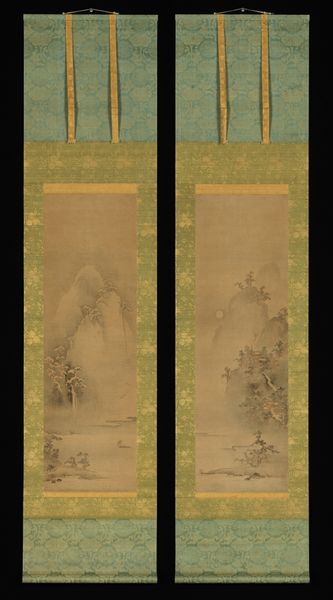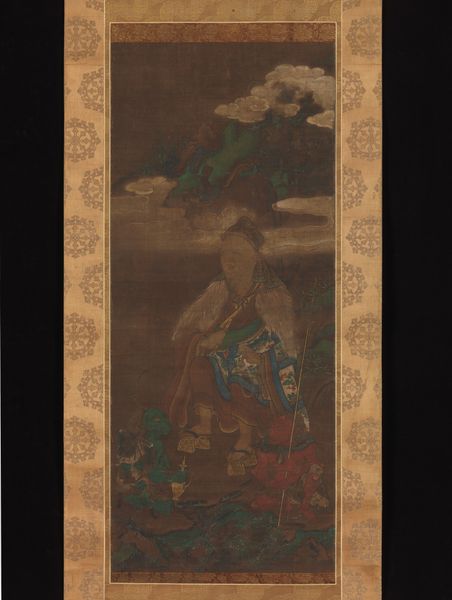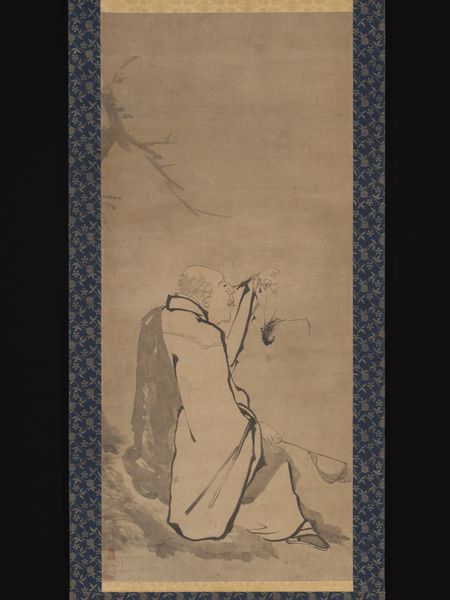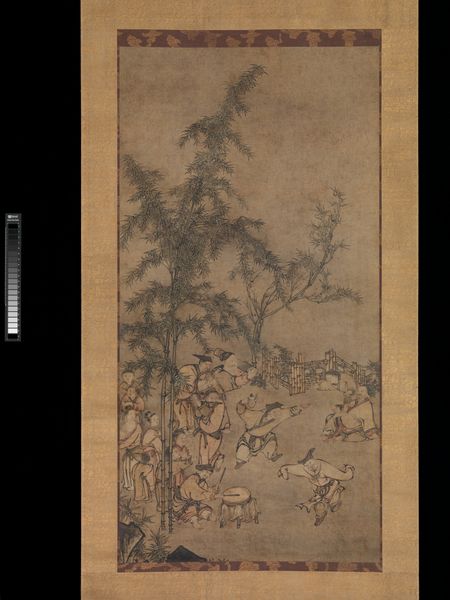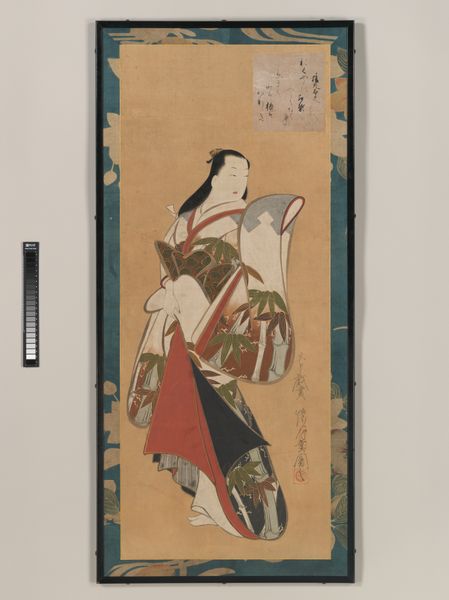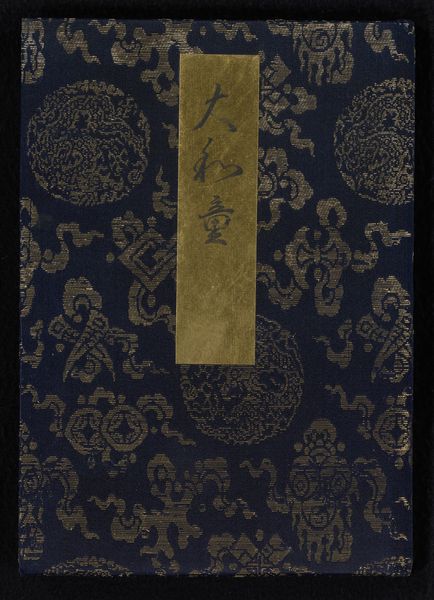
tempera, painting
#
portrait
#
tempera
#
painting
#
asian-art
#
landscape
Dimensions: Image: 33 5/8 × 14 in. (85.4 × 35.6 cm) Overall with mounting: 68 1/4 × 15 7/8 in. (173.4 × 40.3 cm) Overall with knobs: 68 1/4 × 17 3/4 in. (173.4 × 45.1 cm)
Copyright: Public Domain
Curator: Before us is Sakai Hōitsu’s “White-Robed Kannon,” a tempera painting created around 1823, now residing here at the Metropolitan Museum. What are your immediate impressions? Editor: There’s an ethereal, almost dreamlike quality to it. The subdued colors and delicate brushwork create a sense of serenity. The rendering of the central figure is the most compelling structural element for me. Curator: Absolutely, the aesthetic effect is certainly part of Hōitsu's intent. However, to fully appreciate this Kannon, we must acknowledge its roots in complex religious and cultural exchanges. Representations of Kannon, as a Bodhisattva of compassion, often serve to provide comfort, something of note to keep in mind while regarding this piece. Editor: You make a good point; one that I'm still interpreting. Yet, I can't ignore the cascading waterfall in the background or the jagged rocks below the figure. The texture contrasts with the smoothness of Kannon. It's very thought-provoking. Curator: Consider the specific moment this work inhabits, though, for the painting emerges in a time when representations of Kannon underwent a transformation in Japan. Hōitsu was of the Rinpa school; note the synthesis of traditional Japanese aesthetics with Buddhist iconography in this unique portrait. How do we reconcile the historical context with the formal elements you pointed out? Editor: This reconciliation reveals a deeper symbolic interplay. Kannon seems balanced within chaos; a deliberate contrast emphasizing their compassionate and guiding nature. The painterly strokes of the flowing water reflect a sense of both movement and tranquility. Curator: Precisely! So much more than the painting is rendered in mere aesthetics. Understanding Kannon within intersectional narratives, like the push-and-pull with Buddhist iconography, can highlight elements of power, gender, and even spiritual resistance. Editor: By seeing it within those dynamics, its power as an emblem shifts. Examining line and light, considering art history—it's enriched so thoroughly through understanding these elements. Curator: Indeed. Sakai Hōitsu gives us both an object of contemplation and a point of entry into deeper cultural understanding. Editor: Yes, by looking at the brushstrokes or contextual clues, you might take from it what you need to see, in that moment.
Comments
No comments
Be the first to comment and join the conversation on the ultimate creative platform.
